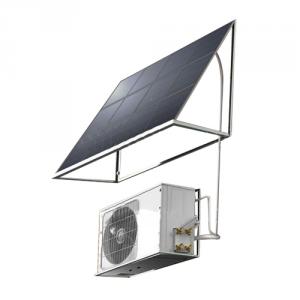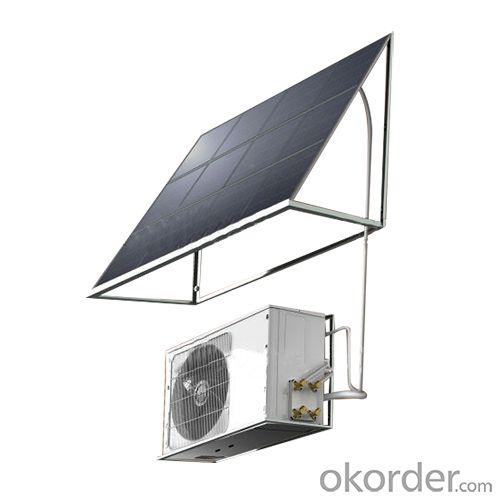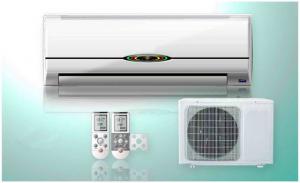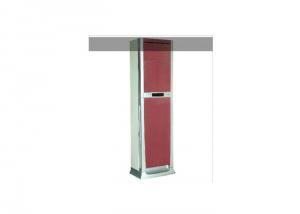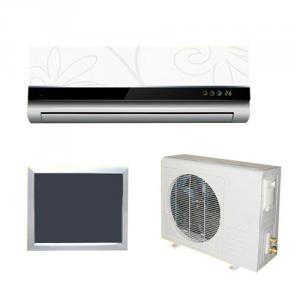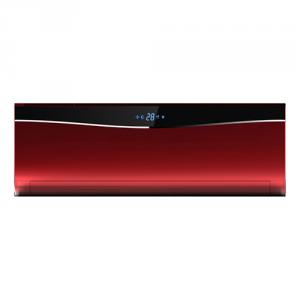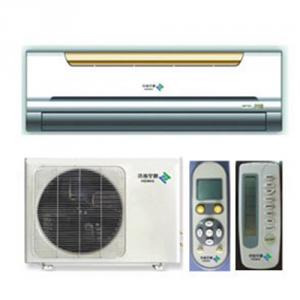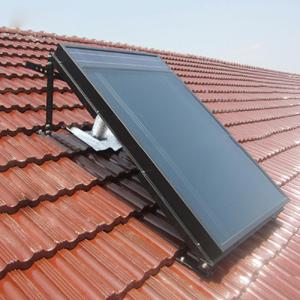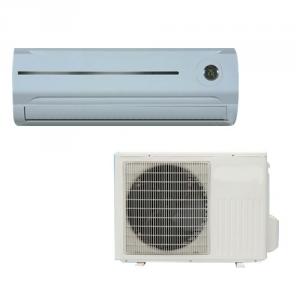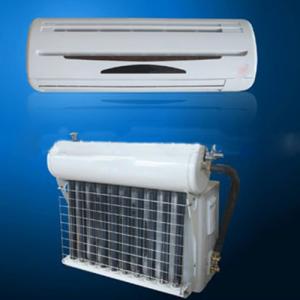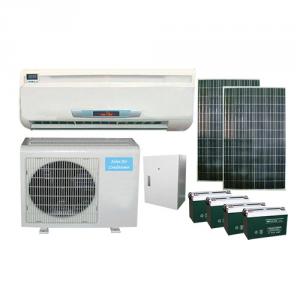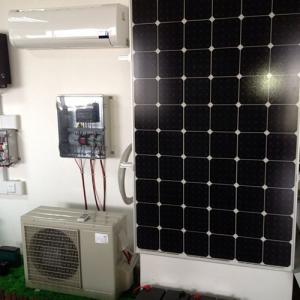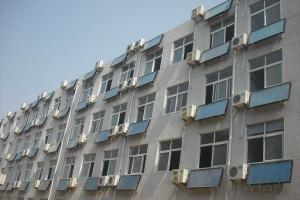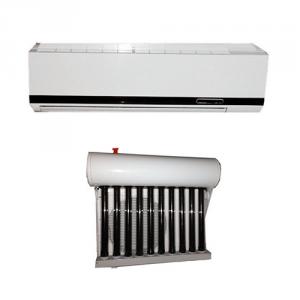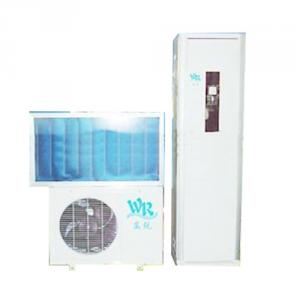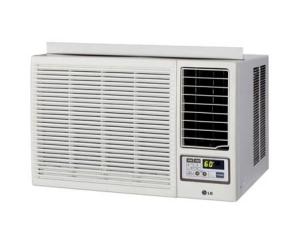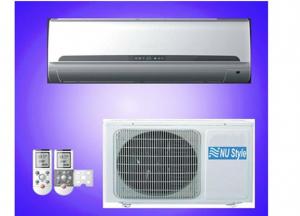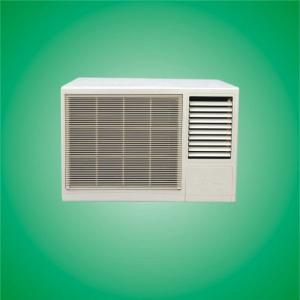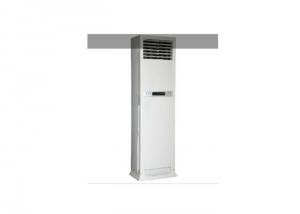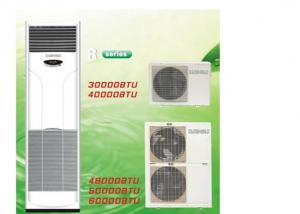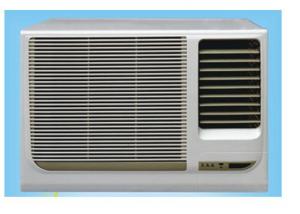Hot Sale 100% Solar Air Conditioner,DC Solar Powered Air Conditioners For Homes
- Loading Port:
- Ningbo
- Payment Terms:
- L/C,T/T
- Min Order Qty:
- 1 Units set
- Supply Capability:
- 300 Units per Day set/month
OKorder Service Pledge
OKorder Financial Service
You Might Also Like
hot sale 100% solar air conditioner,dc solar powered air conditioners for homes,home aircon
Main futures:
This pure solar air conditioning adopt DC power,using 48V/24V dc inverter solar powered,which is clean energy and renewable energy from the sun! so it is energy-saviing and eco-friendly,no need any electricity consuption! In a word,it is a air conditioner no electricity. The solar power air conditioner 100 can work only solar power from solar panel and battery .
Don't worry in cloudy or rainy day, this split 100% solar air conditioner for home can work for 4 hours to 12hours by using electricity from battery power ,which is storage in battey when sunshine time.
Now you can see the dc solar powered air conditioners is an evolutionary technology.
More for this dc solar powered air conditioners you will intrested:
warranty:3 years for aircon compressor,1 year for whole unit.
Pls kindly note :The solar mini split air conditioners use 48v dc air conditioner compressor or 12 volt air conditioner compressor
This solar ac(gree air conditioners) Install and operator is easy as normal air conditioner
Samples are OK and available,welcome to contact us for split solar air conditioner price of sample and bulk order.
Main Features
* High-SEER BLDC (Brushless DC) permanent magnet compressor.
* AC-DC Automatically convert
* Solar powered air conditioning requires no AC power.
* Compressor provides high efficiency operation and slow start.
* Overnight operation available.
* Innovative control logic for energy saving.
* Uses min. 4 standard 12V deep cycle solar batteries.
* Needs minimum of ~800 watts of standard solar panels.
* Works with external standard solar charge controller.
* Solar panel require
specification
| Wall Mounted Type DC Solar Air-Conditioner(4 hours) | ||||||
| Power Supply 8VDC (44V to 54 V) | ||||||
| Model No. | TKF-26GW/DC | TKFR-35GW/DC | TKFR-52GW/DC | TKFR-72GW/DC | ||
| Performance | ||||||
| Capacity | Cooling | Btu/h | 9000 | 12000 | 18000 | 24000 |
| W | 2600 | 3500 | 5200 | 7200 | ||
| Heating | Btu/h | 10000 | 13000 | 20000 | 27000 | |
| W | 2800 | 3700 | 5400 | 7900 | ||
| Noise | Indoor | dB(A) | ≤40 | ≤42 | ≤44 | ≤46 |
| Outdoor | dB(A) | ≤50 | ≤52 | ≤55 | ≤58 | |
| Air Circulation | m³/h | 450 | 550 | 750 | 1050 | |
| Suitable Area | m² | 10~15 | 12~25 | 20~35 | 25~45 | |
| EER | W/W | 4.56 | 3.89 | 4.00 | 4.00 | |
| Btu/h/w | 15.79 | 13.33 | 13.85 | 13.33 | ||
| Refrigerant | R-134A | R-410A | ||||
| Compressor | DC 48V | |||||
| Power Consumption | ||||||
| Power Input | W | 570 | 900 | 1300 | 1800 | |
| Rated Current | A | 11.5 | 16 | 23 | 33 | |
| Input Power | V | DC 48 | DC 48 | DC 48 | DC 48 | |
| Dimension | ||||||
| Indoor Unit | Shipping | mm | 745*255*195 | 775*260*210 | 990*320*210 | 1150*320*210 |
| NET | mm | 780*240*305 | 840*325*265 | 1070*395*285 | 1070*395*285 | |
| Outdoor Unit | Shipping | mm | 645*245*495 | 790*260*540 | 850*300*700 | 850*300*700 |
| NET | mm | 725*320*540 | 910*370*610 | 950*400*750 | 950*400*750 | |
| Solar Panel | Shipping | mm | 1074*801*165 | 1074*801*165 | 1074*801*165 | 1074*801*385 |
| NET | mm | 1200*880*205 | 1200*880*205 | 1200*880*205 | 1200*880*415 | |
| Battery | Shipping | mm | 645*245*495 | 645*245*495 | 645*245*495 | 645*245*495 |
| NET | mm | 180*308*170 | 180*308*170 | 180*308*170 | 360*308*170 | |
| Weight | ||||||
| Indoor Unit | Net/Gross | kg | 11/13 | 13/15 | 17/19 | 19/21 |
| Outdoor Unit | Net/Gross | kg | 38/40 | 45/48 | 48/55 | 56/62 |
| Solar Panel | Net/Gross | kg | 50/65 | 30/35 | 50/65 | 58/65 |
| Battery | Net/Gross | kg | 30/38 | 20/26 | 30/38 | 40/45 |
| how many solar panel and batteries do I need ? | ||||
| Work time on no sunshine | 9000BTU | 12000BTU | 18000BTU | 24000BTU |
| 4 hours/day | Solar panel 50W*4 Batteries 12V60Ah*4 | Solar panel150W*6 Batteries12V100Ah*4 | Solar panel 150W*8 Batteries 12V150Ah*4 | Solar panel150W*12 Batteries12V200Ah*4 |
| 8 hours/day | Solar panel150W*8 Batteries12V120Ah*4 | Solar panel150W*12 Batteries12V200Ah*4 | Solar panel150W*16 Batteries 12V250Ah*4 | Solar panel150W*24 Batteries12V200Ah*8 |
| Above data accord with sunlit time is 6.6Hours/day to calculate | ||||
| Work time on no sunshine | If there is no sunshine, our 100% solar ac still can working time with fully charged battery | |||
FAQ
Q1:Why is it important to use home air conditioner filters?
A:Without them you can clog up vital parts of the heating or cooling components that can be difficult to clean out and can cause severe damage that will be much more expensive to repair than the inconvenience of replacing a filter once a month.
Q2:What is VRF Air Conditioning System?
A:VRF air-conditioning systems owe their growing popularity to their ability to meet a wide range of requirements.
- Q: How do you clean the air ducts on an air conditioner?
- Improving indoor air quality and enhancing the overall performance of an air conditioner relies heavily on the crucial maintenance task of cleaning the air ducts. To assist you in this process, here is a step-by-step guide: 1. Begin by ensuring your safety: Prior to commencing the air duct cleaning, it is imperative to turn off the air conditioner and disconnect it from the power source. This precautionary measure guarantees your well-being during the cleaning procedure. 2. Eliminate the vent covers: Initiate the process by removing the vent covers from the air ducts. Depending on the type of air conditioner you possess, these covers may either be screwed on or effortlessly snap off. Use a screwdriver or your hands to cautiously detach them. 3. Remove dust and debris using a vacuum cleaner: Employ a vacuum cleaner equipped with a brush attachment to meticulously vacuum the interior of the air ducts. Pay particular attention to the areas near the vents, as they tend to accumulate a greater amount of dust and debris. This step facilitates the elimination of loose particles, preventing them from recirculating into your indoor air. 4. Clean the vent covers: While the air ducts are being vacuumed, take advantage of the opportunity to clean the vent covers. Wipe away any accumulated dust, dirt, or grease using a damp cloth or a mild detergent solution. Rinse them thoroughly and allow them to dry completely before reattaching. 5. Inspect for mold or mildew: Scrutinize the interior of the air ducts for any signs of mold or mildew growth. If you detect any, it is advisable to seek professional assistance for a proper remediation process. Attempting to clean mold or mildew without the necessary knowledge and equipment may lead to further contamination. 6. Replace air filters: The air filters in your air conditioner play a vital role in maintaining clean air within your home. Take advantage of this opportunity to replace or clean the air filters, following the instructions provided by the manufacturer. This step ensures optimal airflow and filtration efficiency. 7. Reattach the vent covers: Once the air ducts are clean and the air filters have been replaced, securely reattach the vent covers. Ensure proper alignment and a snug fit. Regularly cleaning the air ducts of your air conditioner is indispensable for preserving a healthy indoor environment. It is recommended to perform this task at least once a year or more frequently if you observe excessive dust accumulation or reduced airflow. Additionally, consider scheduling professional air duct cleaning every few years to undergo a more comprehensive cleaning and inspection.
- Q: Air conditioning indoor machine drop
- Install the wind deflector (air conditioning) 1) can meet condensate through the catheter out. 2) to avoid the cold wind blowing straight body, regulate the cold wind direction
- Q: Can an air conditioner remove humidity from the air?
- Yes, an air conditioner can remove humidity from the air.
- Q: Open the wastage of the dehumidification function of air conditioning for a long time
- Refrigeration, dehumidification and cooling are actually in dehumidification operation is usually cooling operation in order to improve the ability of moisture reduces the operation on the basis of the wind speed, the impact is not big for the loss of air conditioning itself. But dehumidification refrigeration capacity is lower than normal refrigeration operation ability, so long-term fire of refrigeration effect is affected by the pattern of wet.
- Q: How do you troubleshoot an air conditioner that is not blowing cold air?
- If your air conditioner is not blowing cold air, there are several troubleshooting steps you can follow to identify and potentially resolve the issue. Here is a step-by-step guide: 1. Check the thermostat settings: Ensure that the thermostat is set to the correct temperature and cooling mode. Sometimes, the issue may simply be a wrong setting. 2. Clean or replace the air filter: A dirty or clogged air filter can restrict airflow and reduce the cooling efficiency of the air conditioner. Clean or replace the filter regularly to ensure proper airflow. 3. Inspect the outdoor unit: Check if the outdoor unit (condenser) is blocked by debris, leaves, or any other obstructions. Clear any obstacles and ensure the unit has enough clearance for proper airflow. 4. Inspect the indoor unit: Ensure that the indoor unit (evaporator) is clean and free from dust or debris. Clean the unit if necessary and remove any obstructions around it. 5. Check the refrigerant level: Low refrigerant levels can result in reduced cooling capacity. If you suspect a refrigerant leak, it is best to call a professional HVAC technician to inspect and recharge the system. 6. Check for air leaks: Inspect the air ducts, vents, and connections for any leaks. Air leaks can reduce the cooling efficiency of the system. Seal any leaks using duct tape or call a professional technician for repairs. 7. Check the condensate drain line: Ensure that the condensate drain line is not clogged. A blocked drain line can cause water buildup and affect the cooling performance. Clean the drain line or call a professional to clear any blockages. 8. Check the circuit breaker: Verify that the circuit breaker for the air conditioner is not tripped. If it is, reset the breaker and see if the unit starts blowing cold air. If these troubleshooting steps do not resolve the issue, it is recommended to contact a professional HVAC technician. They have the necessary knowledge and tools to diagnose and repair complex air conditioning problems.
- Q: The fluorine plus air conditioning is what type?
- Are the main R22, partly R41Oa. But it is now out of the air conditioning is R410a. Basically is to see the name card, outdoor are written with what kind of refrigerant system search
- Q: Why are blown out air conditioning inside so smelly
- Because the air conditioning in use after a period of time, screen pack, evaporator and air supply system will accumulate a large amount of dust, dirt, produce large amounts of bacteria and viruses. With these harmful material in indoor air circulation, air pollution, disease, serious harm human health. And dirt will reduce air conditioning refrigeration efficiency, increase energy consumption and shorten the service life of the air conditioning. As a result, the air conditioning in use after a period of time, or change garments according to the stop, must be clean. In this way can we ensure that you have a health, pure and fresh air environment.
- Q: How do you check the thermostat sensor on an air conditioner?
- To inspect the thermostat sensor on an air conditioner, the following steps can be followed: 1. Find the thermostat: Typically, the thermostat can be found on the interior wall near the air conditioning unit. It is a small device equipped with buttons or a digital display. 2. Power off: Prior to examining the thermostat sensor, it is crucial to turn off the power to the air conditioner. This can be achieved by either switching off the circuit breaker or unplugging the unit. 3. Remove the thermostat cover: Carefully detach the cover of the thermostat by unscrewing or sliding it off. Be cautious not to cause any damage to the wires or components. 4. Identify the sensor: Once the cover is removed, the thermostat sensor will become visible. It is a small, cylindrical metallic object resembling a bulb. Typically, it is situated near the front of the thermostat. 5. Clean the sensor: Utilize a soft cloth or a cotton swab dipped in isopropyl alcohol to cleanse the thermostat sensor. Gently wipe away any accumulated dirt, dust, or debris. Ensure that the sensor is completely dry before proceeding. 6. Check the sensor connection: Inspect the wiring connections of the sensor to ensure they are secure and not loose. If any loose or damaged wires are found, they may require repair or replacement. 7. Reassemble and test: After cleaning the sensor and inspecting the connections, reassemble the thermostat cover. Restore power to the air conditioner and set the thermostat to the desired temperature. Allow a few minutes to observe if the air conditioner begins functioning correctly. If the air conditioner continues to exhibit unexpected behavior or if there is suspicion of a faulty or malfunctioning sensor, it is advisable to seek the assistance of a professional HVAC technician who can accurately diagnose and address the issue.
- Q: How to choose home air conditioning
- Are sales good 10 before air conditioning, about air conditioning ten major brands in what brand is good, the author in the online shopping there is quite a long time and experience, for this air conditioning, I suggest you pay attention to the following two points, the first is to be chosen jersey sales shops, illustrates how it stores sell a large amount of air conditioning is very popular with everyone. And play to see buyers of evaluation, evaluation is not only more, and the high praise of probability to paste
- Q: Can an air conditioner help reduce humidity in a room?
- Indeed, the presence of an air conditioner is capable of diminishing humidity within a confined space. The functionality of air conditioners lies in their ability to lower the temperature of the air while simultaneously extracting moisture via a procedure known as condensation. When warm air traverses the evaporator coil of an air conditioner, it undergoes a cooling process, thereby prompting the moisture present in the air to condense and manifest as water droplets. These droplets are then amassed and expelled from the unit, effectively diminishing the prevalent humidity in the room. Moreover, air conditioners facilitate the circulation and filtration of the air, which further contributes to the reduction of humidity levels.
Send your message to us
Hot Sale 100% Solar Air Conditioner,DC Solar Powered Air Conditioners For Homes
- Loading Port:
- Ningbo
- Payment Terms:
- L/C,T/T
- Min Order Qty:
- 1 Units set
- Supply Capability:
- 300 Units per Day set/month
OKorder Service Pledge
OKorder Financial Service
Similar products
Hot products
Hot Searches
Related keywords

